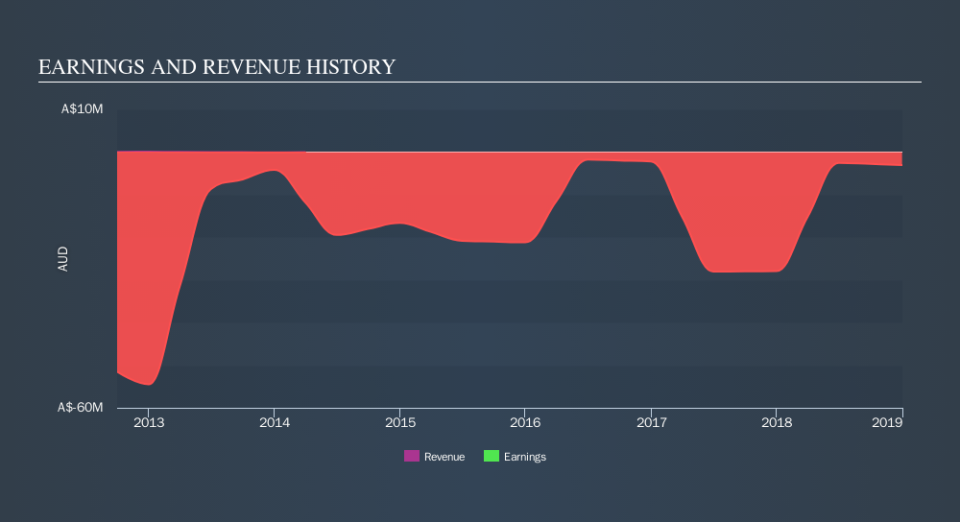When Will Deep Yellow Limited (ASX:DYL) Come Back To Market?

Deep Yellow Limited (ASX:DYL) continues its loss-making streak, announcing negative earnings for its latest financial year ending. Savvy investors should always reassess the situation of loss-making companies frequently, and keep informed about whether or not these businesses are in a strong cash position. Selling new shares may dilute the value of existing shares on issue, and since Deep Yellow is currently burning more cash than it is making, it’s likely the business will need funding for future growth. Looking at Deep Yellow’s latest financial data, I will estimate when the company may run out of cash and need to raise more money.
Check out our latest analysis for Deep Yellow
What is cash burn?
With a negative free cash flow of -AU$5.4m, Deep Yellow is chipping away at its AU$8.4m cash reserves in order to run its business. The riskiest factor facing investors of Deep Yellow is the potential for the company to run out of cash without the ability to raise more money. Furthermore, it is not uncommon to find loss-makers in an industry such as energy. The activities of these companies tend to be project-driven, which generates lumpy cash flows, meaning the business can be loss-making for a period of time while it invests heavily in a new project.
When will Deep Yellow need to raise more cash?
We can measure Deep Yellow's ongoing cash expenditure requirements by looking at free cash flow, which I define as cash flow from operations minus fixed capital investment, is a measure of how much cash a company generates/loses each year.
Free cash outflows declined by 37% over the past year, which could be an indication of Deep Yellow putting the brakes on ramping up high growth. However, even if Deep Yellow maintains its cash burn at the current level of -AU$5.4m, then given the current level of cash in the bank, Deep Yellow will still have to raise capital again in 1.6 years. Although this is a relatively simplistic calculation, and Deep Yellow may continue to reduce its costs further or borrow money instead of raising new equity capital, the outcome of this analysis still gives us an idea of the company’s timeline and when things will have to start changing, since its current operation is unsustainable.
Next Steps:
This analysis isn’t meant to deter you from Deep Yellow, but rather, to help you better understand the risks involved investing in loss-making companies. The outcome of my analysis suggests that even if the company maintains this rate of cash burn growth, it will run out of cash within the year. This may lead to share price pressure in the near term, should Deep Yellow be forced to raise capital to fund its growth. Keep in mind I haven't considered other factors such as how DYL is expected to perform in the future. I recommend you continue to research Deep Yellow to get a better picture of the company by looking at:
Historical Performance: What has DYL's returns been like over the past? Go into more detail in the past track record analysis and take a look at the free visual representations of our analysis for more clarity.
Management Team: An experienced management team on the helm increases our confidence in the business – take a look at who sits on Deep Yellow’s board and the CEO’s back ground.
Other High-Performing Stocks: If you believe you should cushion your portfolio with something less risky, scroll through our free list of these great stocks here.
NB: Figures in this article are calculated using data from the trailing twelve months from 31 December 2018. This may not be consistent with full year annual report figures. Operating expenses include only SG&A and one-year R&D.
We aim to bring you long-term focused research analysis driven by fundamental data. Note that our analysis may not factor in the latest price-sensitive company announcements or qualitative material.
If you spot an error that warrants correction, please contact the editor at editorial-team@simplywallst.com. This article by Simply Wall St is general in nature. It does not constitute a recommendation to buy or sell any stock, and does not take account of your objectives, or your financial situation. Simply Wall St has no position in the stocks mentioned. Thank you for reading.

 Yahoo Finance
Yahoo Finance 
